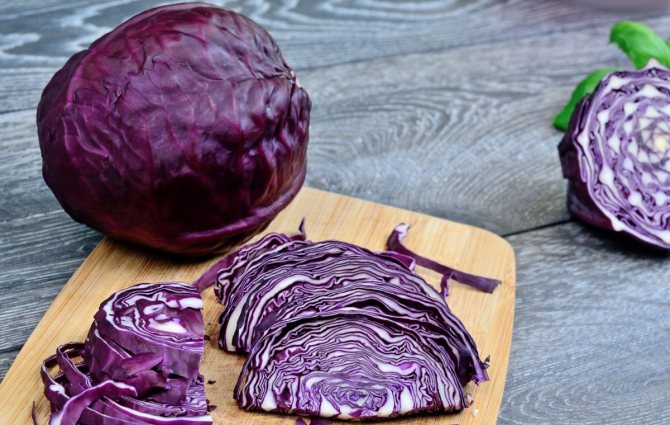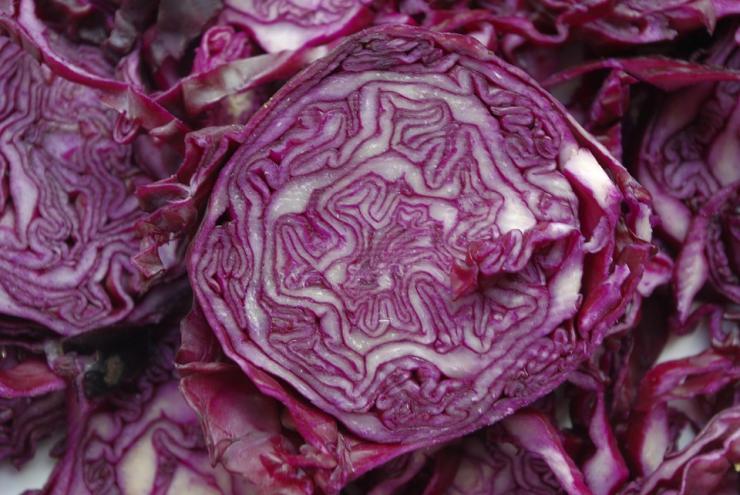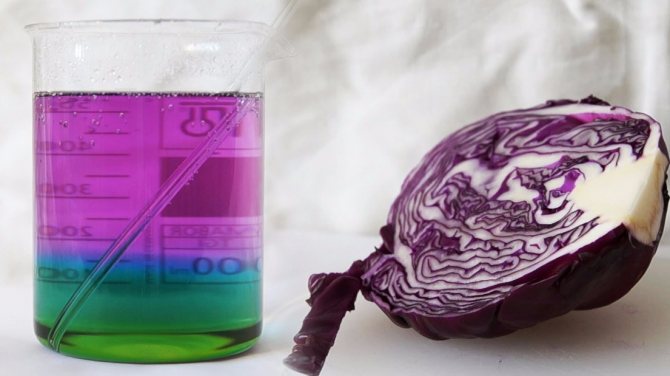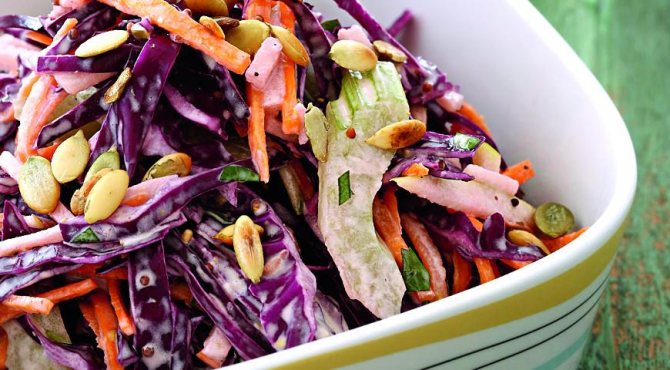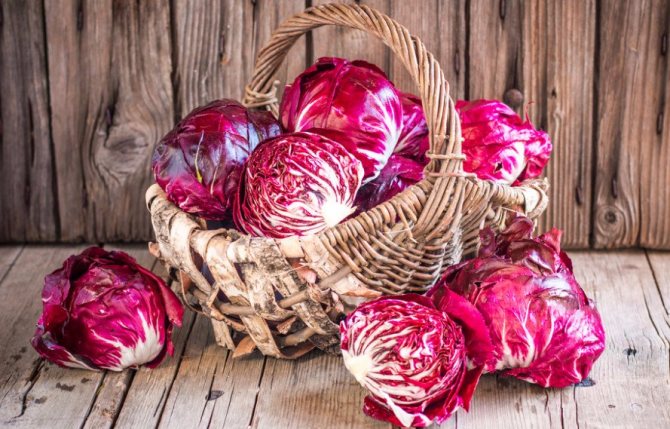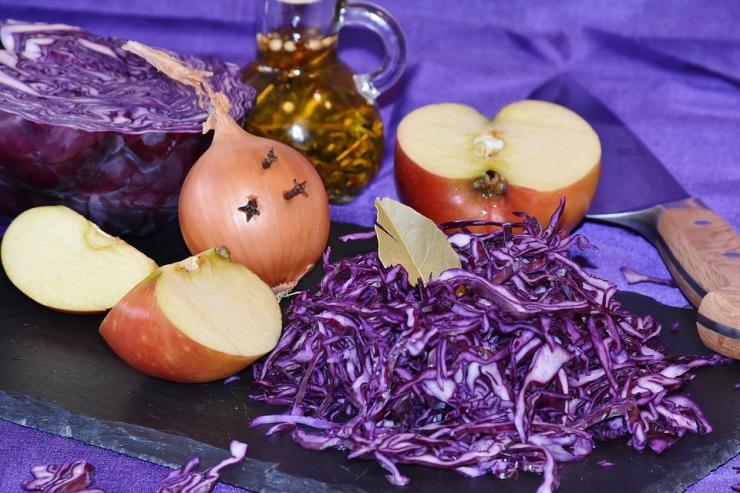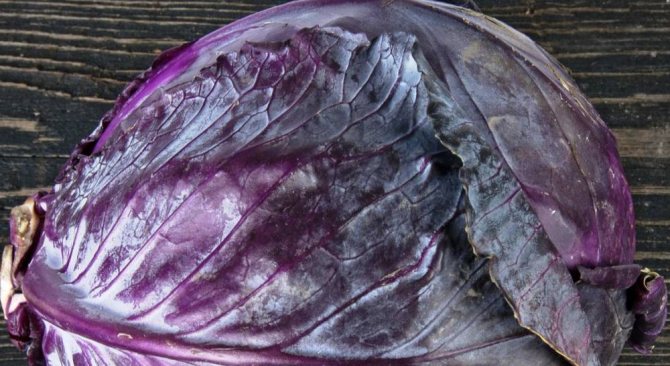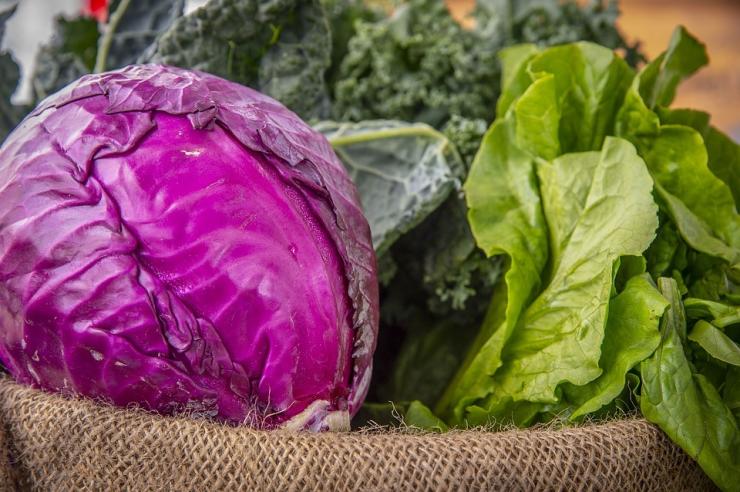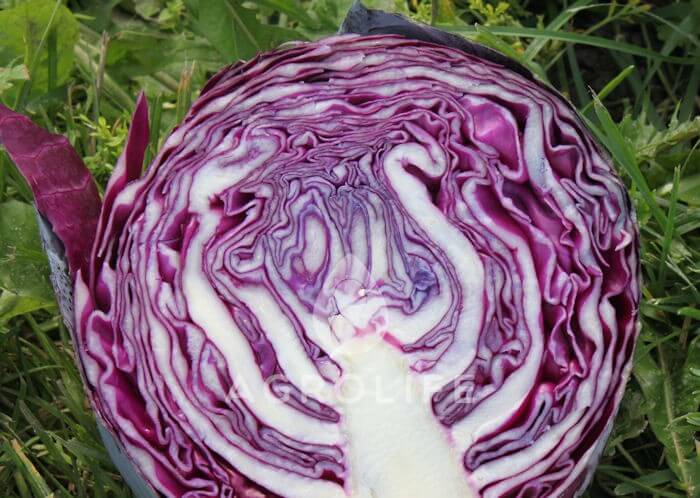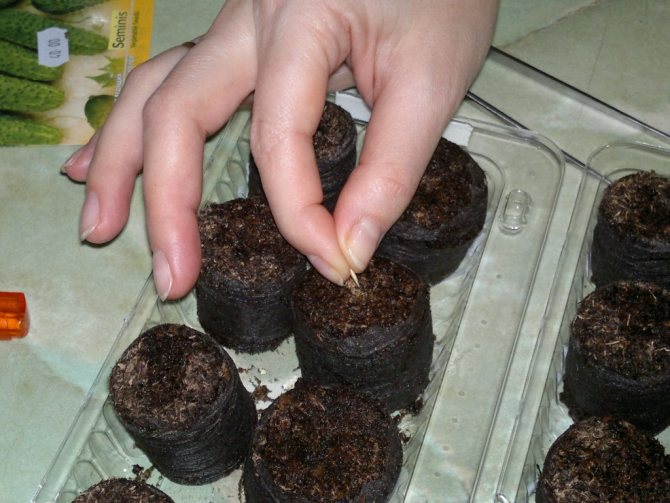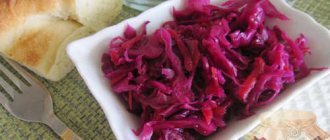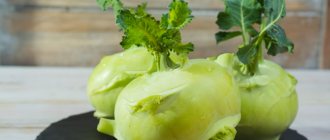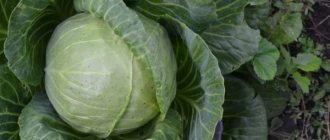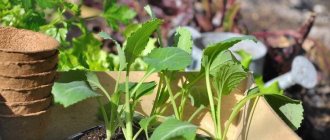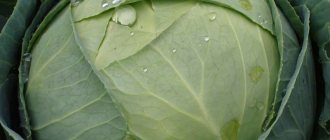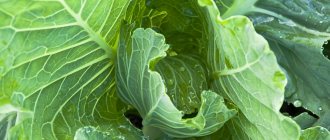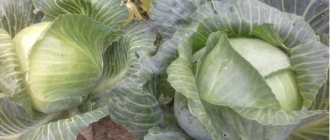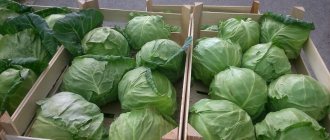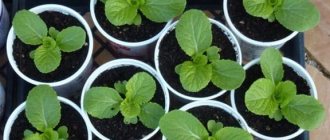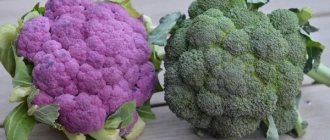Red cabbage is considered a healthy vegetable that grows in many home gardens and is used in cooking. In Russia, this type of cabbage is not so popular when compared with white cabbage, but sometimes there is more benefit in it than in its closest relative. In this article, we will talk in more detail about what are the beneficial properties of white cabbage, what harm planting can do to the human body. Here are a few healthy and delicious recipes for making cabbage so that you can get the most out of it.
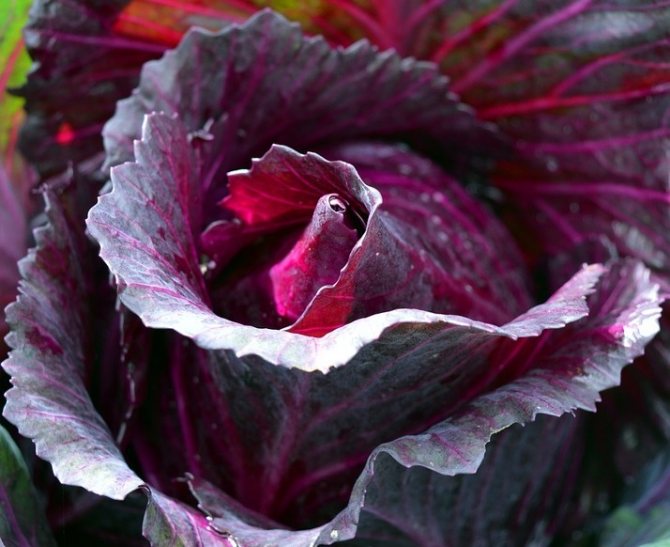
What it looks like and where it grows
Purple cabbage, also often called red cabbage, is a type of cabbage with purple leaves. It belongs to the cruciferous plant families. The purple color is given to it by pigments - anthocyanins.
It was first cultivated in ancient times in the Mediterranean. According to scientists, purple leaves were a favorite delicacy of Pythagoras. Botanists are still unclear where it comes from, is it an independent species, or is it the result of an accidental crossing of a familiar type of white cabbage.
It is widely cultivated all over the world, especially in Europe, America and China. This variety of cabbage came to Russia in the 17th century from Europe.
The main features of a vegetable are:
- Small size of heads of cabbage;
- Always dense structure;
- Juicy leaves;
- Round or oval shape of the fruit;
- Total weight up to 3 kg;
- Rather early maturation;
- Long-term storage.
Interestingly, it is often used as an indicator of soil pH. The saturation of its color directly depends on the acidity of the soil where it grows.
Features of agricultural technology
Cultivation of red cabbage is similar to white cabbage, and the first step is to prepare seedlings in greenhouses (if desired, in protected open ground). The seeds are planted in the ground 1-1.5 cm deep, at a distance of 8-10 cm. The ideal temperature for growth is 15-18 degrees Celsius. It is transferred to open soil after the appearance of 5-6 leaves (after about 40-50 days).
Red cabbage is planted by seed method, but this requires preparation (hardening) of seeds. They are placed in 50-degree water for 20 minutes, then cooled in cold water for a couple of minutes. It will not be superfluous to place them in a nutrient solution (1 teaspoon of nitrophosphate per liter of boiled water, rinse and leave in the refrigerator for 24 hours).


Cabbage intended for long-term storage (the optimal storage temperature is about 0 degrees) is best harvested in October, preferably in dry weather. The more frost-resistant species tolerates slight frosts, but one should beware of frostbite of the heads of cabbage, due to which further storage problems are possible.
Chemical composition
Almost all nutritionists refer this beautiful cabbage to dietary products. The red color is due to the presence of polyphenols, which give it anti-inflammatory properties.
In addition to them, it contains:
- Vegetable proteins;
- Fats (represented by saturated, monounsaturated and polyunsaturated fatty acids);
- Carbohydrates (there are fewer of them than in white cabbage);
- Sahara;
- Organic acids;
- Dietary fiber (fiber);
- Important amino acids;
- Vegetable oils;
- Glucosinolates (they give bitterness);
- Enzymes (for better digestion and assimilation of food);
- Retinol (vitamin A);
- Provitamin A (beta-carotene);
- Biotin (vitamin H);
- Tocopherol (fat-soluble vitamin E);
- Ascorbic acid (vitamin C; replenishes the daily requirement of the body by 85%);
- B vitamins (thiamine, riboflavin, niacin, pyridoxine, folic and pantothenic acids);
- Minerals such as potassium, calcium, magnesium, sodium, iron and phosphorus.
The total calorie content of 100 grams of red cabbage (without the stalk) is only 26-27 kilocalories.
Benefit for health
Red cabbage leaves are widely used in folk and traditional medicine as a natural ingredient to help:
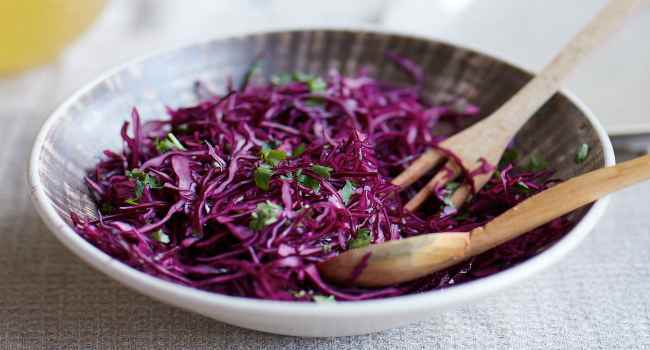

- Reduce the risk of developing a disease such as tuberculosis (effectively fights tubercle bacillus. It is recommended that this vegetable be on the dinner table at least twice a week);
- Increase resistance to the negative effects of radionuclides;
- Remove salts of heavy metals;
- Improve the general composition of the blood with leukemia;
- Prevent the appearance of breast cancer in women;
- Strengthen the tooth enamel (it is advised to regularly rinse the mouth with vegetable juice);
- Cope with cardiovascular disease;
- Significantly strengthen the most fragile vessels of the body - capillaries;
- Stabilize blood pressure in hypertension;
- Normalize cholesterol levels by removing excess cholesterol;
- Increase the body's resistance to various infections (that is, strengthen the immune system);
- Coping with respiratory problems (such as bronchitis);
- Get rid of the effects of jaundice (bile is perfectly excreted from the gallbladder);
- Heal external wounds and cuts (cabbage juice is often used);
- Increase blood clotting;
- In the treatment of chronic gastritis;
- In general, improve the work of all organs of the gastrointestinal tract;
- Heal stomach ulcers;
- Lose extra pounds and thereby get rid of excess weight;
- In the treatment of diabetes mellitus.
In cosmetology, red cabbage juice is used. It contributes to:
- Improving complexion;
- Giving velvety and tenderness to the skin;
- Strengthening nails and hair (especially dark color) when rinsing the latter.
Summarize
- Red cabbage is a nutrient-rich vegetable associated with a number of health benefits.
- These include reducing inflammation, improving heart health, strengthening bones, improving bowel function, and possibly even reducing the risk of certain types of cancer.
- This vegetable is also incredibly versatile and is one of the most cost effective ways to add beneficial antioxidants to your diet.
Tags: Cabbage
- Similar posts
- 6 health benefits of bitter melon (momordica) and its extract
- Onions: benefits and harms to the body
- What is acorn squash and is it good for your health?
«Previous post
Purple cabbage in cooking
It is worth remembering that red cabbage is never sweet. Rather, it has a bitter taste.
Like the white-headed species, the leaves of this cabbage variety are used for:
- Salads (raw), which should be seasoned with vegetable oil;
- Extinguishing;
- Borscht;
- Decorating various dishes.
It is also worth noting that the vegetable is the most environmentally friendly and can be stored for a long time.
True, the greatest benefit for the human body is the consumption of raw cabbage. Indeed, in this case, all vitamins and minerals are preserved.
Features of varieties
This type of cabbage (in common people - red cabbage) includes mid-ripening and late-ripening varieties that reach the usability of heads of cabbage, respectively, on the 125-155th and 180-200th days after germination.
Varieties of red cabbage differ from each other in the size of the rosette, the size of which (diameter, on average) varies in mid-ripening and mid-late ones from 60 to 80 cm, in late-ripening ones - over 80 centimeters. Depending on the size of the outlet, cabbage also requires a different feeding area.
The height of the hilling of plants depends on the height of the outer stump, which is short (up to fifteen centimeters), medium (15-20 centimeters) and high - over 20 centimeters. Varieties with a higher stump need high hilling.
Red cabbage varieties also differ in the size of their heads, but to a lesser extent than white cabbage varieties. Small (10-15 centimeters in diameter) and medium (from 16 to 25 centimeters) heads of cabbage prevail, large ones (up to 40 centimeters) are less common.
The density of the heads of cabbage is an important economic characteristic. Varieties with dense heads of cabbage are more transportable and better kept fresh.
Red cabbage with a short inner stump, which reaches 1/3 of the head's height, is valued higher. Usually they are characterized by an increased density of heads of cabbage.
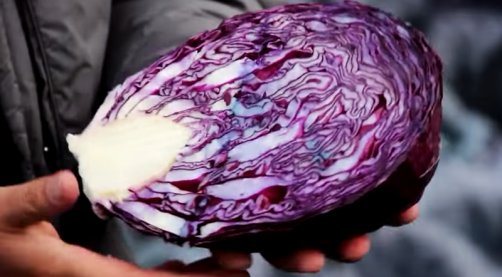

Photo of red cabbage in a cut
Stone head 447
Stone head 447 is a mid-season variety of red cabbage, used fresh in the fall and at the beginning. Before the beginning of the economic validity of the heads of cabbage, 105-135 days should pass, before the mass one - from 120 to 145 days. The rosette is medium in size, the outer stump is often short in height. Heads of cabbage are round, weight of a head of cabbage is about 1.2-2.5 kilograms, color is red-violet, density is good. The variety is medium-yielding (18-35 kg per 10 m²), insufficiently resistant to cracking, ripening, medium keeping quality, good transportability. It is widely zoned in the northeastern, northwestern regions, as well as in the central, southern parts of the non-chernozem zone.
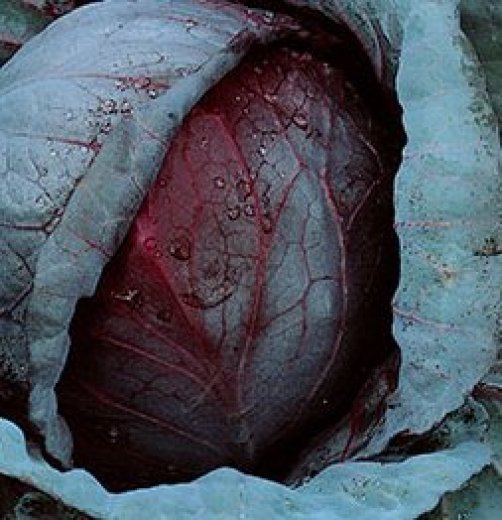

In the photo cabbage variety Kamennaya golovka 447
Gako 741
Gako 741 is a mid-late red cabbage variety that is used in the fall and winter. It ripens a week later than the Kamennaya head 447 variety. The rosette is medium in size, the outer stump is often high. Heads of cabbage are round, weighing 1.1-3.6 kilograms, less often - short-oval, good density (3.2-4.0 points), purple color. The variety is fruitful (average yield 25-66 kg per 10 m²). Resistant to cracking, cold-resistant. Transportability, keeping quality of heads of cabbage during storage until May are good.


Photo of cabbage variety Gako 741
Variety Mikhnevskaya
Mikhnevskaya is the best mid-season red cabbage variety for long-term winter storage. It is mainly used for preparing salads. It takes 97-130 days for the heads of cabbage to expire, and 115-140 days to reach the mass. The rosette is medium in size, the outer stump is medium, less often short. Heads of cabbage are round, less often short-oval, more often of medium size, dense or very dense (4-5 points), their weight is 1.4-2.9 kg.
The variety is fruitful, high-quality. Insufficiently resistant to mucous bacteriosis, keel. In winter, it is stored until March. High transportability.
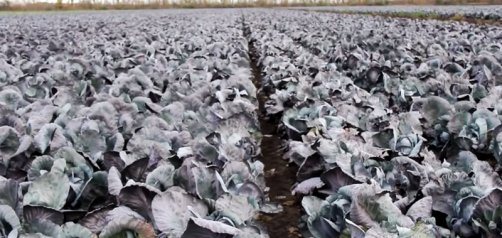

In the photo there is a field with red (red) cabbage


In the photo, cabbage varieties Fuego f1
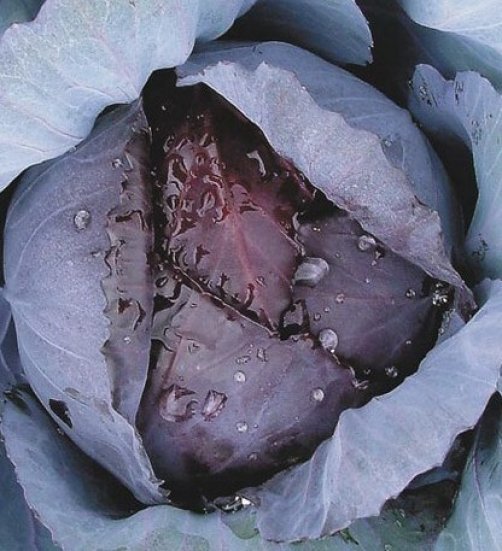

Photo of Juno red cabbage
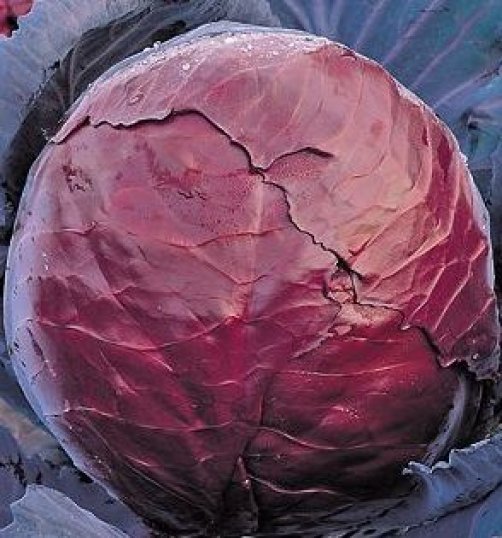

In the photo, the Firebird is a variety of red cabbage


Photo variety Pobeda


In the photo, red cabbage of the Kalibos variety


Red cabbage is the closest relative of white cabbage. However, in taste and dietary qualities, it surpasses this popular culture. Unfortunately, in the CIS countries, the vegetable has a very limited distribution. There are several explanations for this: the late maturity of many varieties and ignorance of the nuances of cultivation. However, you should not give up planting a beneficial crop for these minor reasons.
Harm to health
Like any food product, red cabbage has not only positive aspects, but also some contraindications:
- Should not be used while taking blood thinning medications;
- It is forbidden to people with an individual intolerance to cabbage;
- The vegetable is not recommended for people suffering from flatulence (increased gas production);
- It has been proven that it is red cabbage that negatively affects the assimilation of iodine (therefore, for those who have impaired thyroid function, it is better to refuse the product);
- In case of exacerbation of diseases of the duodenum, consumption is allowed only after heat treatment.
The daily consumption rate is no more than 200 grams.
Babies are allowed to enter complementary foods no earlier than 6 months.


